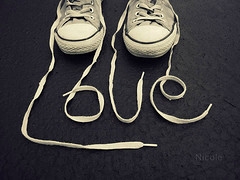
Ancient Sumeria to Pre-Columbian America: The Sparkling History of Jewelry
The history of a mineral, crystal or metal can unlock a deeper, more meaningful value to jewelry. Indeed, the anthropology, archaeology, geography, and technology of special gems and elements can provide rich stories.
Copper
Take for example copper, and its oxides, which are the most ancient minerals used. They began showing up in the ancient jewelry of Sumeria, Pre-Columbian America, and Egypt around 4,000 B.C., and also played a vital role in the wars fought in those volatile regions.
In addition to copper, Egyptians were also among the first to develop bronze, a mixture of tin and copper. As early as 3,900 B.C., Egyptians were developing copper products which eventually were used in common household items such as cooking pots. By 2,500 B.C., Egyptian jewelry makers had developed copper to a level that it was being used to create crows and headdresses.
Copper use in Pre-Columbian America may predate its use in the Middle East. In some cultures, metal working was so advanced it rivaled those of the European invaders. Pre-Columbian Americans used copper for bells, ornaments, weapons, jewelry, and armor.
Gold
The history of gold is long and complex, toppling some cultures and giving rise to others. It has been and continues to be a symbol of wealth and power. Not surprisingly, the use of gold in African cultures has been extensive. Most often, tribes used gold to create objects for the court of the local chiefs. Workshops exclusively dedicated to the production of these treasures were extensive and elaborate.
In the Middle East, the discovery of Egyptian jewelry found in the tomb of Queen Zer and Queen Pu-abi of Ur in Sumeria are not only the oldest pieces of gold jewelry in existence, but also the oldest examples found in any kind of jewelry.
Sadly, over the centuries thieves raided most of the Egyptian tombs. Thankfully, however, the tomb of Tutankhamen remained undisturbed until its discovery in the 20th century. It was the largest collection of gold and jewelry in the world and represents the highest mark of skill in art achieved in human history.
The Minoan culture grew rich as a trading culture along the Mediterranean trade routes and as a result, its jewelry making flourished. The Minoans are known for their stamped gold sheeting and filigree and granulated gold jewelry, burial masks, and beads. Some of these techniques show up in Etruscan art. In Rome, the use of gold grew beyond jewelry and expanded into household items and furniture in the homes of the higher classes.
The news of the discovery of gold during the 19th century in the American West could result in thousands of settlers who would risk life and limb for a chance of finding gold. The most famous gold rush occurred in California at Sutter’s Mill in 1848.
Silver
Silver has been found in modern-day burial excavations of the ancient Sumerian city of Ur. What is now modern-day Turkey was once a major source of mined silver. The Chaldeans were the first culture to extract silver form other ores around 2,500 B.C.
Historically, the cultures of South and North America, Greece, China, Rome and Mexico developed superior silversmithing techniques and made wide use of silver, not only in jewelry but also in household items.
In the New World, Spanish conquests revealed that the skills of silversmiths were comparable to Spain in level of technique and artistry. Exploitation of this silver by Europeans in Bolivia, Peru and Mexico eventually produced nearly 85 percent of the world’s silver between 1500 and 1800.
In the 19th century, silver jewelry became more affordable thanks to advances in technology. Tiffany and Company began producing silverware in New York, while Nevada enjoyed the boom days of the Comstock Lode in Virginia City, during which the mine produced millions of dollars worth of silver.
Silver was the metal of choice in the 20th century for craftsmen of the Arts and Crafts movement, who rebelled against the mass produced jewelry that dominated the time. They combined silver with uncut stones and cabochons. Jewelers from this time were mostly untrained novices and so the quality of most of the pieces from this movement is low. The best jewelry from the Arts and Crafts movement was produced by C.R. Ashbee, Henry Wilson, Harold Stabler, and Liberty & Co., to name a few. One of the best known Art Nouveau jewelry designers was Louis Comfort Tiffany. In 1964, the U.S. government stopped issuing silver certificates, which up until then had supported the paper currency.
About the Author
Lewis Jewelers is proud to carry the full line of
Pandora Jewelry
. Pandora bracelets, Pandora charms and Pandora beads are only a part of the collection. For more information, Lewis Jewelers, 2000 West Stadium Blvd., Ann Arbor, Michigan, 48103, 877-88-LEWIS or visit the website.